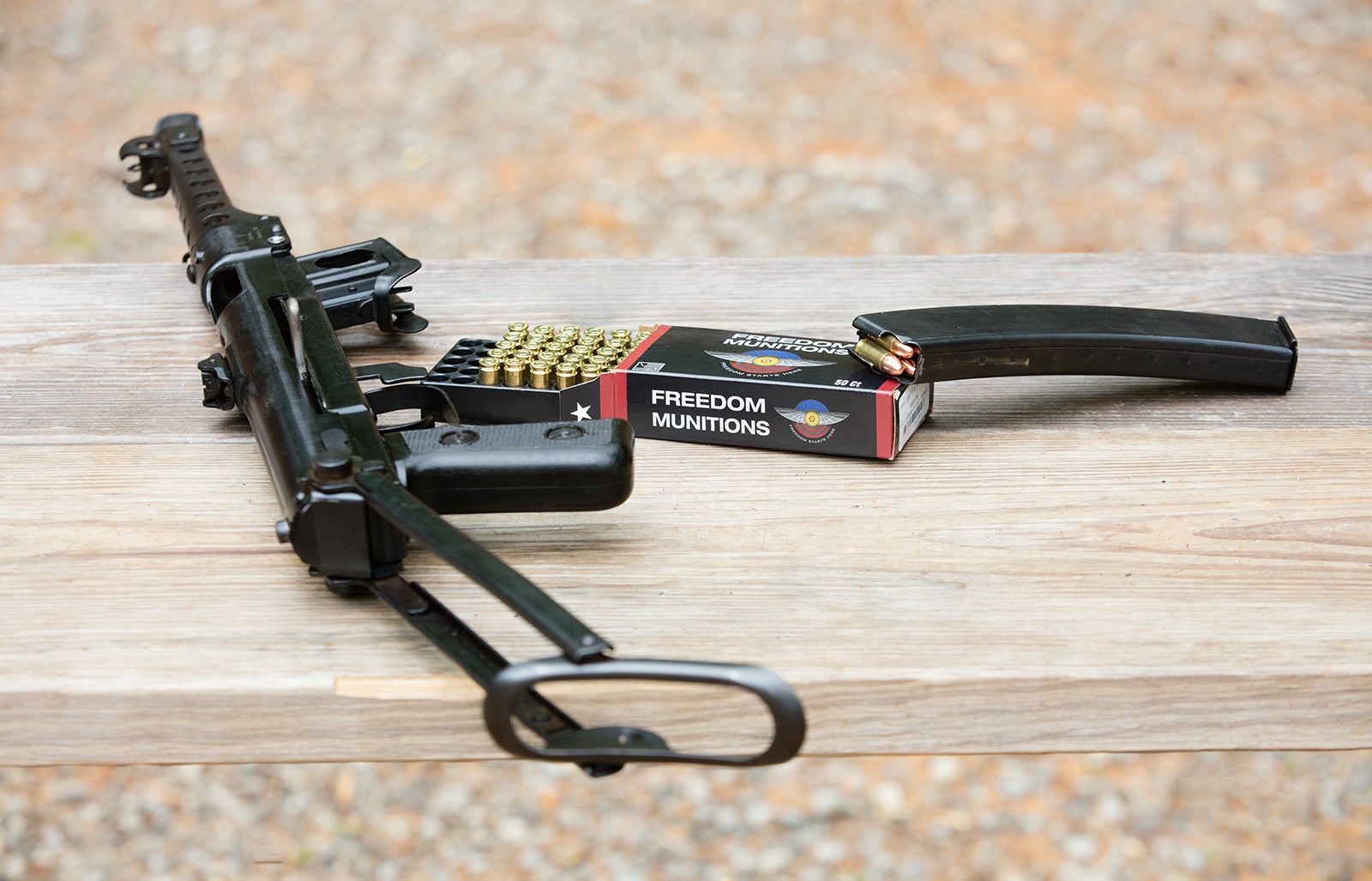In Defense of Open-Bolt Firearms for Civilian Use
Oleg Volk 05.02.16

Handheld open bolt firearms have been around since World War One. In military use, they eventually fell out of favor and were largely replaced with closed bolt designs by the 1980s. The two reasons for the switchover were drop safety (although largely solved by Uzi and similar designs) and accuracy. First-shot accuracy is always better with a closed-bolt weapon due to the absence of the heavy bolt motion immediately prior to the round going off.
Above is a Polish variant of the Soviet PPS43, one of the simplest possible submachine guns in existence. Unlike the original, this one is chambered for 9×19 Luger. It exemplifies the main advantages of open bolt guns: relatively light weight for the cartridge used, very low felt recoil and simplicity of construction permitting lower cost for the same quality. In the US, the same niche is occupied by closed bolt Hi-Point carbines. PPS43 has 33 parts total. Closed bolt Beretta CX4, also a 9mm carbine, twice as many. PPS43 has minimal recoil compared to either. A closed bolt, roller-delayed blowback MP5, which kicks as slightly, has about three times as many parts as PPS43. That means more complicated maintenance and far higher cost, though with far better accuracy in turn. Sig MPX, a true locked breech design with a pistol gets even lower recoil with fewer parts than the MP5, but with greater requirements for production quality control.
The perception of inaccuracy is only partially accurate. Most well designed submachine guns either have a low cyclic rate of fire (American M3, German MP40 and MP41) or an effective compensator (PPSh41), so only the first shot is less accurate than with closed bolt designs. Subsequent shots are at least as accurate thanks to much reduced felt recoil. The energy of the shot is expended partly to stop and reverse the motion of the bolt so, all other things being equal, less bolt weight and less recoil spring strength is required. As you can see from the photo, a thirteen year old boy can control the weapon with little effort.
Hand-held automatic weapons have limited accurate range, usually no more than 50 yards unsupported. Tell me, how often do civilian self-defense events transpire at ranges beyond even twenty yards? Suddenly, a burst grouping two inches wide by four inches tall looks entirely adequate. Why not just use a shotgun? Scatterguns have much heavier recoil and all shot loads under-penetrate relative to well designed pistol bullets.
The next complaint is the high ammunition consumption. Self-defense usually happens up close and fast. Even at full cyclic rate, a standard 35-round magazine would last over three seconds — a very long time in close quarters combat. Used more realistically, with 2-5 round bursts, a single magazine would give about ten seconds of fire superiority over a typical violent criminal looking for easy prey. There’s a good reason why presidential bodyguards have automatic rifles and submachine guns. Those are precisely the tools that enable effective close-range stopping of threats.
Even in semi-automatic only form, open bolt carbines have the advantages of simplicity and low felt recoil. Unfortunately, ATF considers them precursors to submachine guns and regulated them out of existence. But, just because open bolt guns are mostly unavailable to Americans in this wonderful land of the free, doesn’t mean they aren’t useful for lawful self-defense. We shouldn’t excuse their absence on the market by deeming them without merit.


